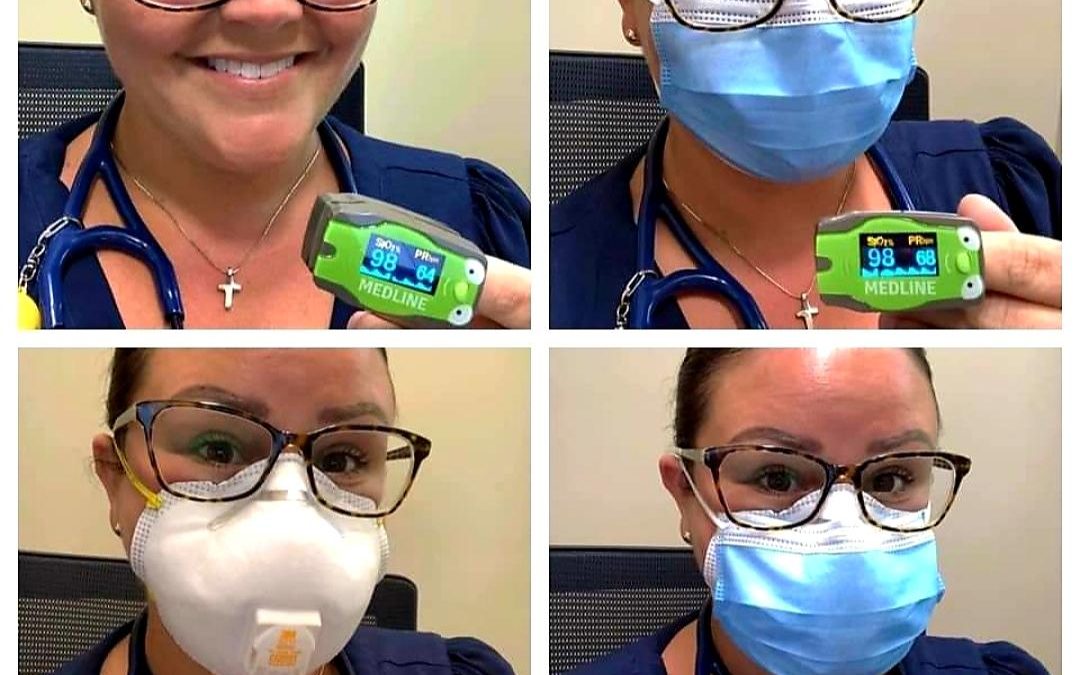Doctor Demonstrates What Happens When You Wear Different Masks
As things are slowly returning back to normal after the coronavirus pandemic, it may be tempting to forget all the safety measures and go on with our lives as we did before. But the world has indeed changed beyond recognition and there’s no choice but to go along with it.
Those who are not into wearing masks for reasons like the “threat is over”, “a mask doesn’t protect from breathing in the virus” and the classic line “I can’t breathe with a mask on”. One doctor has something to say, In fact, Dr. Megan Hall has conducted an experiment on wearing 4 different masks for 5 minutes straight to see how they affected her heart rate and oxygen levels. The results are below and if they don’t convince you, nothing will.
This doctor ran an experiment on how wearing masks affect our bodies and this is what she found out:
I have seen numerous posts and heard people complain they “can’t breathe with a mask on” or they won’t wear one because “oxygen levels drop dramatically while wearing a mask”. Also, “a mask doesn’t protect you from breathing in the virus” but in the same sentence argue they won’t wear one because they are “rebreathing their exhaled carbon dioxide”. I’m not sure how one can even make sense of this theory; if you really believe the virus is penetrating the mask and you’re breathing it in, how do you also believe your exhaled CO2 is getting “stuck”? Viruses need a vector to spread, COVID-19’s vector is respiratory droplets, those droplets aren’t readily getting through a properly worn mask.
As a follow up to my previous post about wearing face masks, I did a little experiment.
Below is me in 4 scenarios. I wore each mask for 5 minutes and checked my oxygen saturation (shown as the percentage below) along with my heart rate (HR, in beats per minute) using non-invasive pulse oximetry. Keep in mind, immediately prior to this, I had been wearing the surgical mask for 5 hours.
Results:
No Mask: 98%, HR 64
Surgical Mask: 98%, HR 68
N95 Mask: 99%, HR 69
N95 & Surgical Mask: 99%, HR 69
(This is how most healthcare providers are wearing masks)
There is no significant change in my oxygen saturation (or HR) in any scenario. Though maybe inconvenient for some, you can still breathe.
As a physician, I urge you and ask you to please wear a mask to protect yourself and those who cannot safely wear a mask (many of my patients, because they are under 2 years old).
The matter of wearing face masks has been controversial throughout the pandemic and it’s now become even more so as regulations have eased in many states. Many myths have been circulating around and one of the common ones is that if worn for long periods of time, they complicate breathing. However, it is common for surgeons and other scientists or healthcare workers to wear face masks, particularly N95 respirators, for prolonged periods of time.
USA Today reports that “Neither the CDC nor the World Health Organization has issued warnings suggesting the use of surgical face masks would result in dangerous oxygen level depletion within the general public.”
Dr. Daniel Pahua Díaz, an academic from the Department of Public Health at the National Autonomous University of Mexico medical school, said that “the feeling of lack of air due to mechanical obstruction depends on the type of mouthpiece we are using.” The feeling of obstruction is just because people aren’t used to wearing the mask.
With reference and thanks to:

